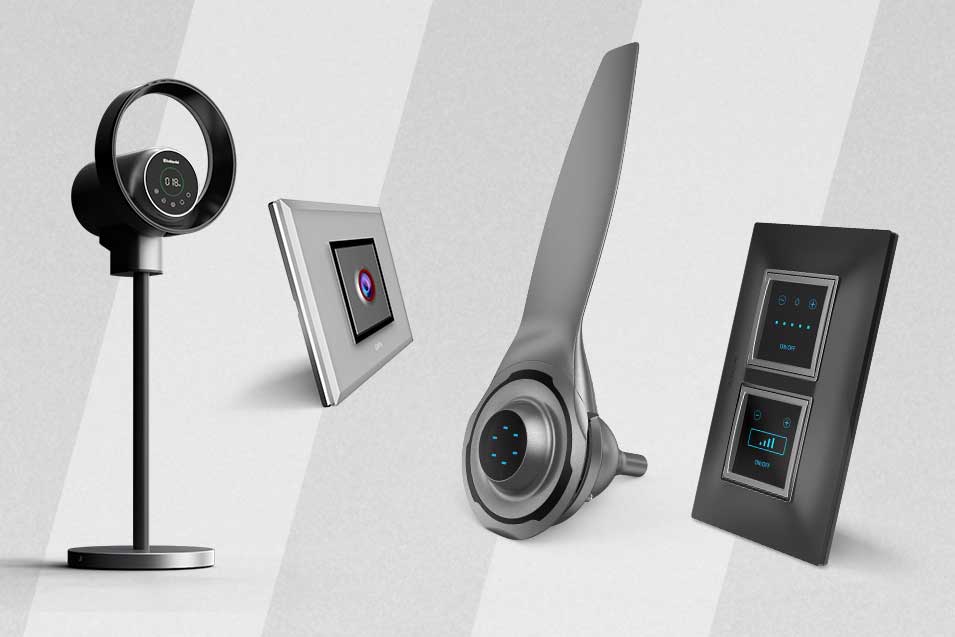
Designing a tech-savvy home office
Designing a tech-savvy home office is all about creating a comfortable, efficient, and inspiring workspace that leverages the latest technology. With more people working from home, it’s important to have a dedicated area that not only supports your professional activities but also boosts your productivity and well-being. Here are essential tips to help you create a modern, technology-driven home office:
- Start with Functional design: Functional design should be at the heart of your home office design. Invest in a high-quality, adjustable chair that supports your back and promotes good posture. Pair this with a desk that complements your work style—consider a sit-stand desk for flexibility. Ergonomic keyboards, mice, and monitor stands can help reduce strain and improve productivity.
- Optimize Your Technology: The cornerstone of a tech-savvy home office is the technology that enables you to work efficiently. A high-performance computer or laptop that meets your specific work requirements is essential. Consider dual monitors for multitasking and a high-speed internet connection to ensure seamless video calls and data transfer. Wireless chargers, a smart power strip, and cable management solutions can keep your workspace clutter-free and functional.
- Smart Lighting and Climate Control: Lighting plays a crucial role in creating an optimal work environment. Smart LED Light bulbs that allow you to adjust brightness and colour temperature can help reduce eye strain and improve focus. Natural light is also vital, so position your desk near a window if possible. Additionally, smart thermostats and air purifiers can ensure your office space has a comfortable and healthy atmosphere, enhancing overall productivity.
- Home Automation for Efficiency: Home automation can make your office smarter and your work easier. With things like voice-controlled assistants, automated lighting, and smart controls, you can regulate your environment with minimal effort. This means lights that adjust themselves and temperatures that always feel right, helping you stay focused and comfortable.
- BLDC Fans for Quiet Cooling: BLDC fans are energy-efficient and run quietly, making them perfect for keeping your office cool without the noise of traditional fans. They also come with features like remote control and variable speeds, so you can easily adjust the airflow to stay comfortable all day long.
- Security and Privacy Considerations: With the increase in cyber threats, ensuring the security of your home office is crucial. Invest in a reliable VPN, use strong, unique passwords, and consider physical privacy measures like webcam covers and paper shredders for sensitive documents.
- Stay Flexible and Update Regularly: Technology evolves rapidly, so stay informed about new tools and gadgets that could enhance your home office. Regular updates to software and hardware can keep your workspace on the cutting edge and ensure you’re always working with the best tools available
Designing a tech-savvy home office is about creating a space that works for you. By focusing on ergonomics, technology, and personal touches, you can build a home office that not only meets your professional needs but also inspires and motivates you every day. Remember, the goal is to create a space where technology enhances your productivity and comfort, making your work-from-home experience as seamless and enjoyable as possible.
Frequently Asked Questions (FAQs) :
Q1. How can I optimize my home office for video conferencing?
Place your desk facing a light source to ensure your face is well-lit and avoid backlit scenarios. Use a high-quality webcam positioned at eye level for a direct, engaging perspective. Invest in a good microphone or headset to ensure clear audio. Tidy up your background or use a professional backdrop. Consider soft, diffused lighting to eliminate shadows and reduce glare.
Q2. What are the essential gadgets for a tech-savvy home office?
High-speed internet connection and a reliable Wi-Fi router are foundational. A quality webcam and noise-cancelling headset improve video and audio clarity for meetings. An ergonomic keyboard and mouse, along with a large, high-resolution monitor (or dual monitors), enhance productivity and comfort. Smart plugs or lights, and a digital assistant can streamline your workflow and environment control.
Q3. Is it necessary to invest in ergonomic furniture for my home office?
Yes, investing in ergonomic furniture is necessary to prevent strain and injury from prolonged sitting and computer use. Ergonomic chairs support your posture, reducing back pain and increasing comfort. Adjustable desks that allow for sitting and standing variations can also reduce the risk of sedentary lifestyle issues. Ergonomic furniture not only boosts comfort but also productivity by enabling longer, more focused work periods.
Q4. How can I maximize space in a small home office?
Use vertical space with shelves and wall-mounted organizers to keep essentials within reach without cluttering the desk. A foldable or wall-mounted desk can save floor space when not in use. Opt for multifunctional furniture, like a desk that also offers storage. Keep the layout simple and clutter-free, and consider light colours to make the space feel larger. Utilize under-desk areas for additional storage solutions.

